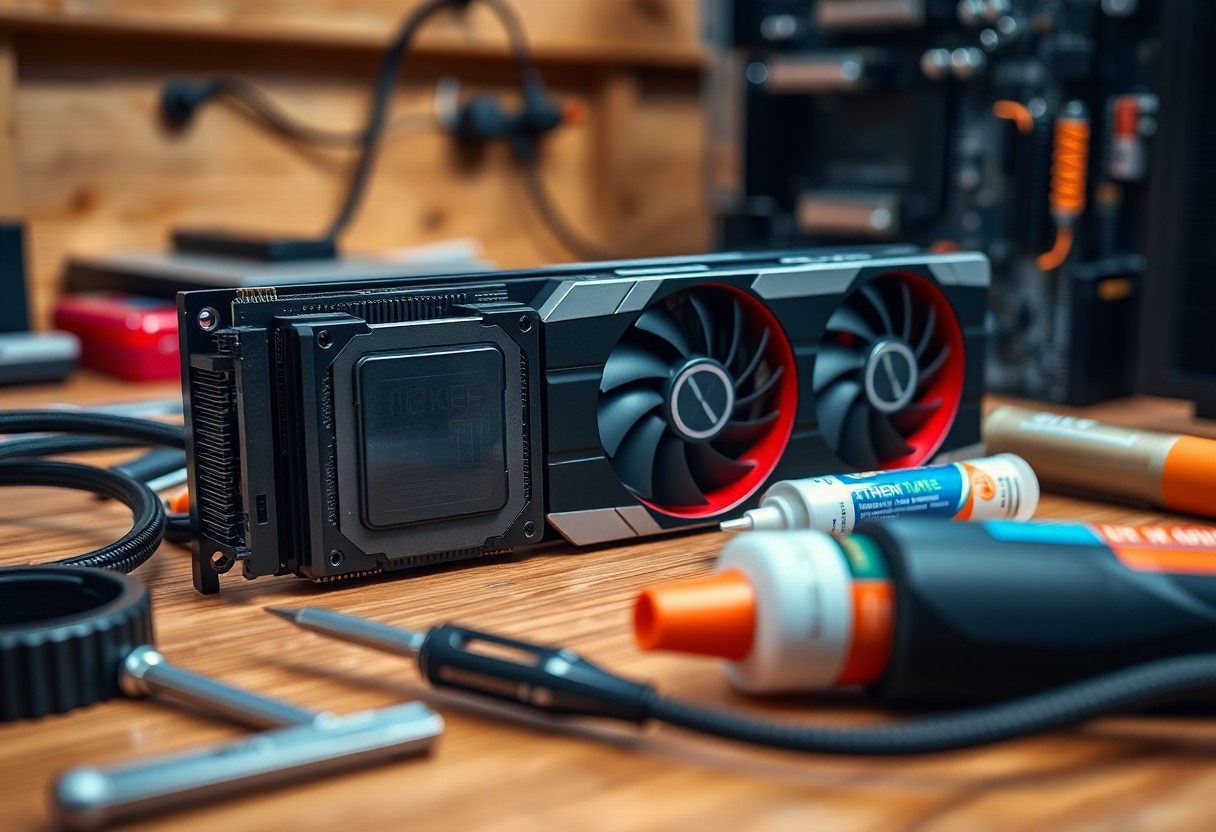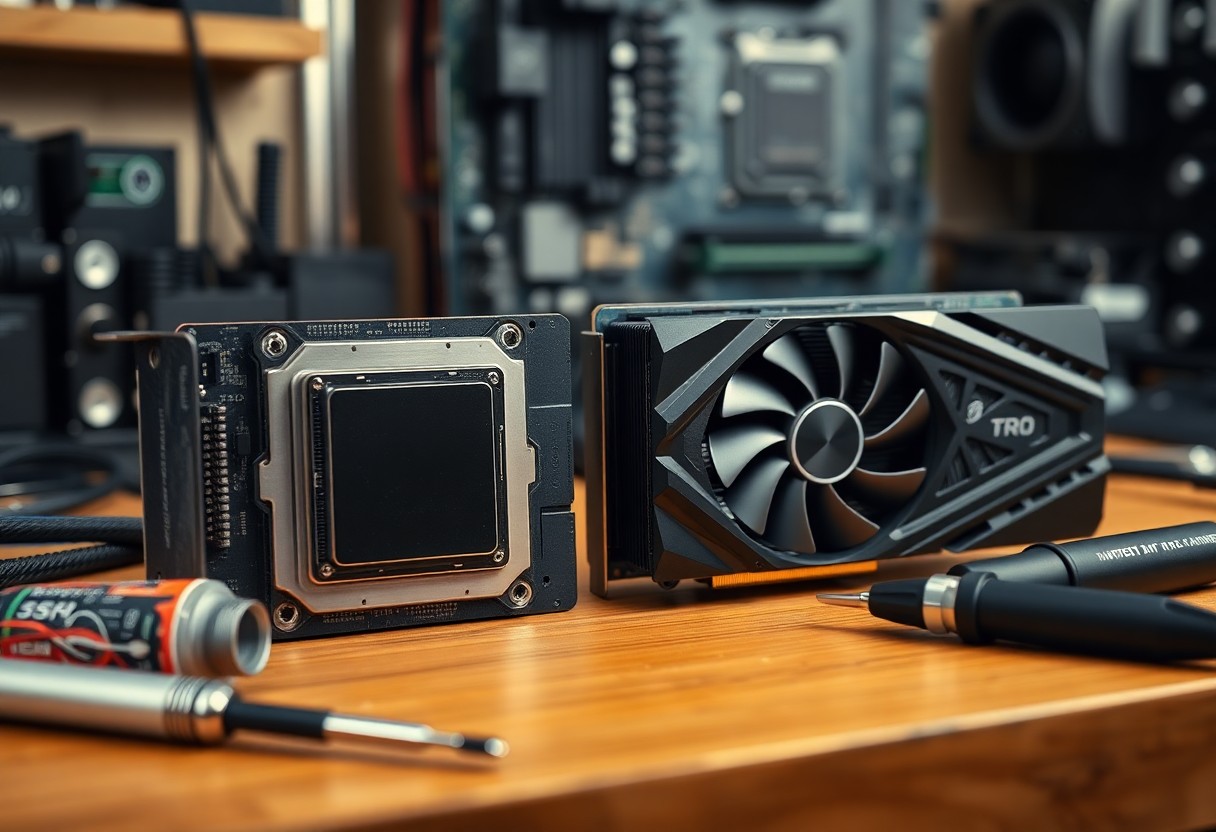PC Bottleneck Calculator
Just understanding the importance of the CPU and GPU bottleneck test can significantly enhance your gaming or computing experience. The bottleneck occurs when the performance of one component limits the potential output of another, causing your system to underperform. By conducting this test, you can identify which part of your setup needs an upgrade for optimal performance. You’ll discover how to assess your current configuration, pinpoint any bottleneck issues, and make informed decisions to achieve that smooth, high-performing system you desire.
Key Takeaways:
- Performance Assessment: A CPU and GPU bottleneck test evaluates how well the CPU and GPU are working together, identifying any performance limitations.
- Balancing Components: It helps determine whether upgrades should be focused on the CPU or GPU to achieve optimal performance in gaming or intensive tasks.
- Monitoring Tools: Utilize benchmarking software and monitoring tools to measure performance metrics and understand where bottlenecks may exist.

Understanding Bottlenecks
While optimizing your gaming or professional workstation, it’s imperative to grasp the concept of bottlenecks. A bottleneck occurs when one component, either the CPU or GPU, limits the performance of the entire system, causing inefficiencies and reduced effectiveness. By recognizing the role of each component, you can ensure a balanced and high-performing setup, ultimately enhancing your overall experience.
Definition of CPU and GPU Bottleneck
To put it simply, a CPU bottleneck happens when your processor is overwhelmed and unable to keep pace with other components, leading to underutilization of the GPU’s capabilities. Conversely, a GPU bottleneck occurs when your graphics card is the limiting factor, resulting in suboptimal CPU performance. Understanding these definitions is key to identifying where the performance gap lies in your system.
Identifying Signs of Bottlenecking
For you to successfully identify signs of bottlenecking, look for specific indicators like sudden frame rate drops, high CPU or GPU usage percentages, and performance inconsistencies across different games or applications. Monitoring your system’s performance will guide you in determining whether the CPU or GPU is the primary culprit behind the slowdowns.
This assessment can be enhanced by using performance monitoring tools to track your hardware’s usage in real-time. High usage percentages (>90%) on either the CPU or GPU during demanding tasks can point to potential bottlenecks. Additionally, inconsistent frame rates or noticeable lags in gameplay often suggest that one component is holding back the other. By identifying these symptoms, you can make informed decisions on upgrades or optimizations that will lead to a better-performing system.
Performance Metrics
Any performance evaluation of your gaming or computing experience must consider various metrics that can highlight potential CPU and GPU bottlenecks. By understanding these metrics, you can make informed decisions about hardware upgrades or optimizations to enhance your overall performance.
Frame Rates and Performance Measurement
Any consideration of frame rates is crucial when assessing the efficiency of your system. Higher frame rates generally indicate smoother gameplay and better user experiences, making them a key performance measurement to monitor.
Utilizing Benchmarking Tools
Rates of performance can be effectively assessed by utilizing benchmarking tools designed for stress testing your CPU and GPU. These tools provide comprehensive insights that help you identify bottlenecks, thereby allowing you to optimize your system.
Due to the variety of benchmarking tools available, it’s important to choose the right ones that cater to your specific needs. Look for tools that offer realistic gaming scenarios, specific hardware tests, and detailed reporting. This will help you gain a clearer picture of your system’s performance and pinpoint potential weaknesses. By consistently using trusted benchmarking applications, you can ensure that your gaming experience remains at its peak and can even guide you toward future upgrades.
Testing Methodology
Many factors affect the performance of your CPU and GPU, making a rigorous testing methodology vital. You need a structured approach to accurately measure performance under different loads and conditions. This involves using benchmarking tools and stress tests to simulate various scenarios, ensuring you gather relevant data to identify bottlenecks effectively.
Setting Up the Test Environment
Testing requires a controlled environment to minimize variables that could impact your results. Ensure that your system is running in a consistent state, free from background processes that may affect performance. Additionally, use reliable software tools to monitor temperatures, utilization rates, and frame rates during your tests.
System Configuration for Accurate Results
System optimization is key to obtaining reliable performance data. You need to use identical hardware configurations across different tests while ensuring that drivers and software are up to date. This guarantees that the only variable impacting performance is the CPU or GPU workload. You should also configure settings such as power options, thermal management, and memory usage to align with manufacturer recommendations, thereby enhancing data accuracy.
A well-configured system will provide you with reliable insights into performance. You should conduct tests in a consistent manner, using the same test environment for every session to ensure fairness in results. Monitoring tool accuracy is paramount; verify that your tools are operating correctly to capture precise metrics. Keeping an eye on thermal performance is also important, as overheating components may lead to throttling, skewing your results. Achieving balance in your configuration allows you to straightforwardly pinpoint where bottlenecks occur in your setup.
Analyzing Results
Keep in mind that analyzing the results of your CPU and GPU bottleneck test is imperative for making informed decisions about your setup. By understanding the data, you can determine where performance is waning and identify which component needs attention or an upgrade. Pay close attention to frame rates, CPU usage, and GPU usage to pinpoint any imbalances in your system that could be affecting gaming or rendering performance.
Interpreting Performance Data
The performance data obtained from your bottleneck tests can highlight areas of weakness in your system. Examine the ratio of CPU to GPU usage during demanding tasks; a high CPU usage paired with low GPU usage may signal a CPU bottleneck, while the opposite might indicate a GPU bottleneck. You may also want to look at frame per second (FPS) numbers and their consistency, as variable FPS can detract from user experience.
Case Studies of Bottleneck Scenarios
Studies show various configurations where bottlenecks can significantly affect performance. Here are some key case studies:
- Gaming at 1440p: i5-10400F with RTX 3060 showed 40% CPU usage and 70% GPU usage, indicating a mild bottleneck.
- Rendering with i9-11900K and RX 6800: CPU at 85% utilization while GPU at 40% utilization, highlighting a severe CPU bottleneck, leading to rendering slowdowns.
- Entry-level gaming: Ryzen 5 3400G paired with GTX 1050, 90% CPU and 65% GPU usage during high-load scenarios resulting in lagging.
Also, in-depth analysis of these case studies helps you identify specific scenarios where performance issues arise and directs you toward the right solutions. Evaluating a high-end GPU used with an underpowered CPU can lead to less significant gains in performance. Conversely, pairing a mid-range CPU with a top-tier GPU may optimize your gaming experience and yield great frame rates. Ensuring your components match in performance capabilities is vital to avoid any performance disparity that could hinder your experience.
Solutions and Recommendations
Despite encountering performance issues due to CPU or GPU bottlenecks, there are effective ways to enhance your system’s performance. You can resolve bottlenecking challenges by opting for hardware upgrades, optimizing your software settings, or a combination of both. Each solution addresses specific limitations, ensuring a smoother gaming or computing experience.
Upgrading Hardware
Along with optimizing software settings, upgrading your hardware can significantly improve performance. Consider investing in a more powerful CPU or GPU tailored to your specific needs, as this can alleviate performance constraints and enhance your overall system capabilities.
Optimizing Software Settings
For maximizing performance, you should explore various software settings within your applications and system configuration. Adjusting graphical settings, resolution, or game performance modes allows you to balance performance and visual fidelity effectively.
This approach not only helps in reducing the load on your CPU and GPU, but it can also lead to improved frame rates in games and faster processing times for applications. You can easily disable unnecessary graphical features or lower resolution settings, enabling your hardware to focus on performance. Make sure to update drivers regularly, as outdated drivers can negatively impact performance and stability. Tuning these settings can yield significant performance gains and create a more enjoyable user experience without the immediate need for new hardware investments.
Future Trends in CPU and GPU Architecture
All indications suggest that the future of CPU and GPU architecture will focus on enhanced integration, efficiency, and AI acceleration. As technologies evolve, we can expect increased collaboration between CPUs and GPUs, enabling more balanced performance in computing tasks. Furthermore, energy-efficient designs will likely emerge, impacting everything from personal devices to large-scale data centers. This shift will not only boost your system’s performance but also reduce the environmental footprint of your computing solutions.
Emerging Technologies
With advancements in machine learning, quantum computing, and 3D stacking, the landscape for CPU and GPU architectures is changing rapidly. These emerging technologies promise greater computational power and efficiency, enabling you to tackle more complex computations and workloads. As they mature, expect a significant impact on your everyday computing tasks and the capabilities of next-generation hardware.
Implications for Gaming and Professional Workstations
With the rise of next-gen CPUs and GPUs, both gaming and professional workstations will experience groundbreaking enhancements. You will benefit from unparalleled processing speeds, improved graphics rendering, and advanced multitasking capabilities, leading to smoother gameplay and more efficient workflow in demanding applications.
A shift towards multi-core architectures and specialized processing units will enhance your gaming and professional workstation performance. In gaming, expect enhancements such as real-time ray tracing and higher frame rates that immerse you deeper into virtual worlds. For professionals, accelerated rendering and efficient resource management will streamline your workflows, allowing you to undertake larger projects and meet tighter deadlines. The future of CPU and GPU design ultimately leads to more powerful and efficient systems that cater to your evolving needs and aspirations.
Final Words
The CPU and GPU bottleneck test is an vital process for optimizing your gaming or computing experience. By identifying potential performance limitations, you can make informed decisions about hardware upgrades or configurations. Understanding the relationship between your CPU and GPU will help you achieve balanced performance, ensuring that neither component hinders the other. By conducting these tests, you position yourself to enhance your system’s overall efficiency and enjoyment in a way that aligns with your specific needs and preferences.

